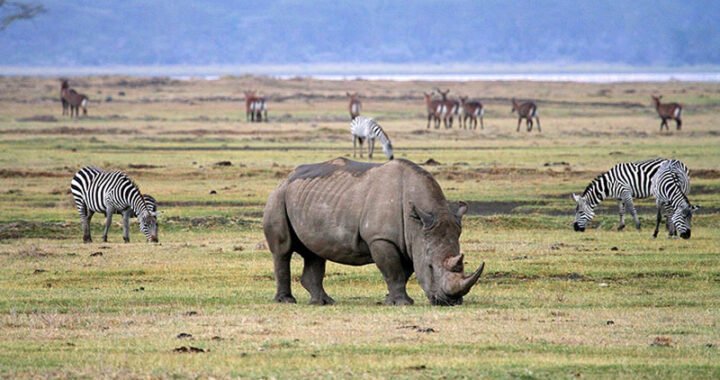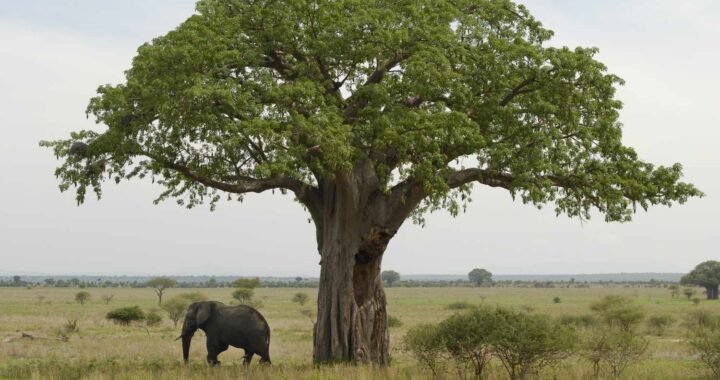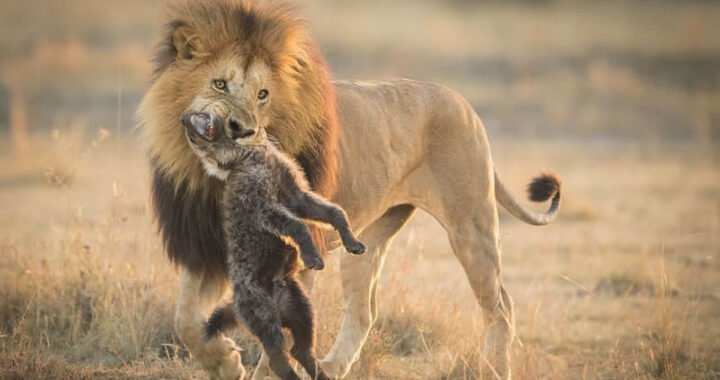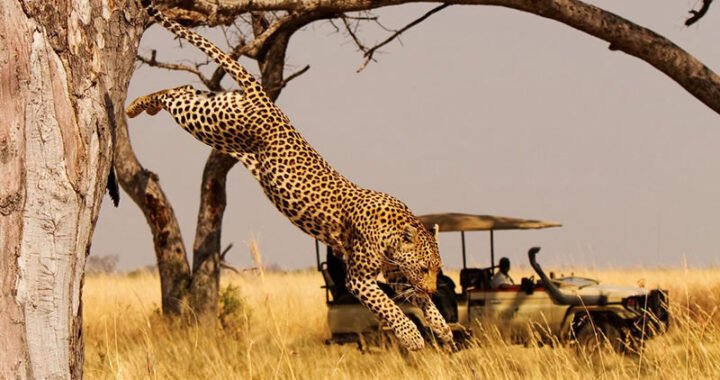Ngorongoro Conservation Area is located in Ngorongoro district in the northern region of Tanzania about 177 from the city of Arusha. Ngorongoro Conservation Area is the home of the amazing big 5 mammals of the African savannah grasslands.
It is popular for harboring some of the endangered animals in the world. Ngorongoro Conservation Area covers an area of about 8,292 square kilometers. Ngorongoro Conservation Area was formerly occupied by the Masai people and in harmony with the animals.
The Masai are traditional nomadic pastoralists was like the Karamojong of Uganda and the Turkana of Kenya move from place to place with their animals searching for water and fresh pasture. When the Ngorongoro Conservation Area was gazette in 1959 the Masai people were no longer allowed in the park.
Ngorongoro Conservation Area is a recognized UNESCO world heritage site. Ngorongoro Conservation Area is a vast area with not only huge populations of wildlife by also other physical features like the Ngorongoro crater, the caldera and Olduvai Gorge.
What are the tourist attractions in Ngorongoro Conservation Area?
The Big Five and wildlife species
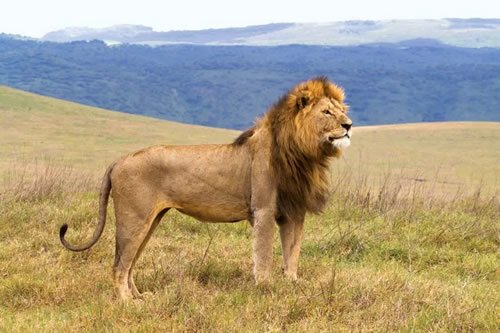
Ngorongoro Conservation Area harbors the Big Five animals and these are one of the main tourist attractions in the area.
These animals include lions, leopards, buffaloes, elephants and rhinos and they can be seen roaming on the savannah grasslands on the plains of Ngorongoro Conservation Area.
There are other wildlife species such as hyenas, jackals, zebras, gazelles, elands, Oryx, leopards, warthogs, wildebeest and many others. The wildlife species in the park can be seen while on a game drive in the area.
Wildebeest Migration
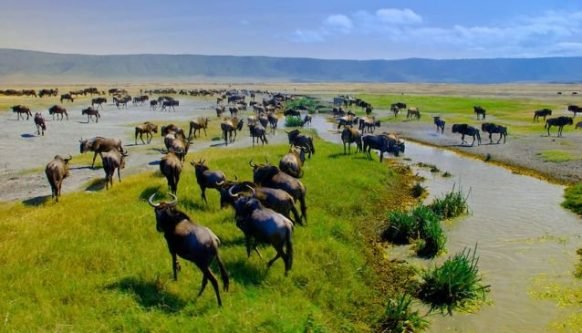
Wildebeest migration is the period around the start of the first rainy season in the months of January, February and March when the wildebeests migrate from Ndutu in Ngorongoro Conservation Area to northwards in Kenya passing through the Serengeti National Park on the border of Kenya.
The wildebeests then cross the great Mara River which is the greatest obstacle on this journey following the rains to Kenya. The wildebeest annual migration is the highlight of the game drive in Ngorongoro Conservation Area.
Bird Species
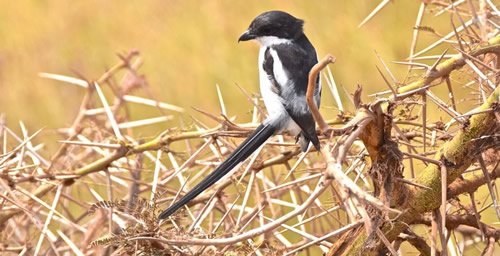
Ngorongoro Conservation Area is a natural haven for over 500 bird species. These bird species live in different eco systems in the area and they are categorized between resident and migratory birds.
The Ngorongoro Conservation Area is a vast land area with several water bodies thus making it a good breeding area from birds. Some of the bird species in Ngorongoro Conservation Area include Augur, buzzard, Blacksmith lapwing, black-headed heron, Speke’s weaver, variable wheatear, grey crowned cranes, pelicans, and many others.
Ngorongoro Crater
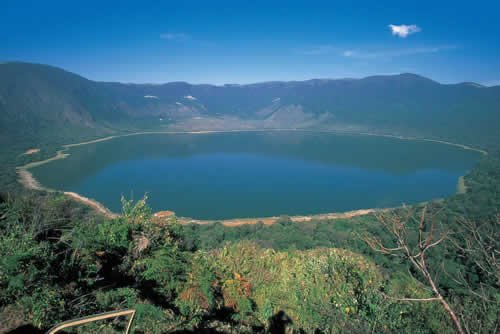
Ngorongoro crater is the prefect place to spot the wildlife species out on the savannah grasslands because it attracts large populations of animals due to its green pasture and plenty of room for hunting and also water. The Ngorongoro Crater harbors some lakes such as Lake Magadi. It is an inactive volcanic crater in the Ngorongoro Conservation Area with a large empty caldera. The volcanic caldera is considered the largest in the world stretching to over 265 square kilometers with a depth of about 610 meters.
What are the things to do in Ngorongoro Conservation Area?
Ngorongoro Conservation Area boasts with a lot of attractions that range from wildlife, bird species, Ngorongoro craters and many others and these attractions lead to activities such as the following.
Game drives
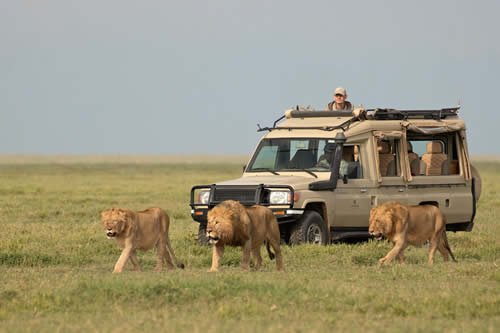
Ngorongoro Conservation Area has a variety of wildlife species stretching to over 2000 species thus making it easy to spot some of these animals while in the park.
Game drives involve exploring the Ngorongoro Conservation Area in your vehicle with the help of a guide you trace down the animals in their natural habitats.
The area offers scenic views of the great wildebeest migration the largest migration of wildebeests in the world. It is a joy to the wildebeest mothers giving birth before following the rains to Kenya as they tussle it out with the predators. The game drives give you a front row seat to these epic scenes.
Bird watching
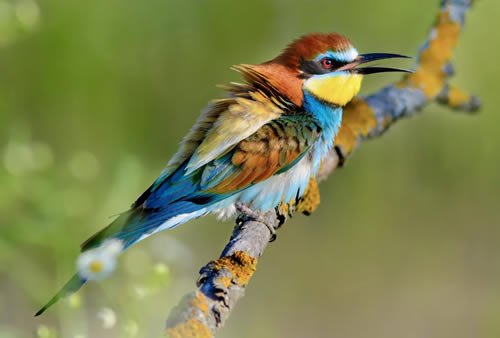
The birding in Ngorongoro Conservation Area is one of the activities most done at the area.
Ngorongoro Conservation Area is rich with a huge population of over 500 bird species that have made the conservation area their home.
These birds are both residents and migratory and can easily be spotted in the park with the help of a professional and experienced guide. The guide takes on a thrilling and eye-catching adventure in the wildness on the search for these birds. There are designated birding trails in the park that ease your search.
Cultural Encounters
While on a tour in Ngorongoro Conservation Area you can take on a cultural encounter in the Masai tribes of the Tanzania and observe the way of live. The Masai are pastoralists who rear livestock and depend on their animals for survival. The Masai were before misunderstood as hostile however after interacting with them you will be opened up to their culture, values and norms.
Ngorongoro Conservation Area also neighbors the rare and small tribe of the bushmen. This tribe has only few people of their kind remaining in the world. The bushmen in Tanzania around Ngorongoro Conservation Area once occupied some land in the park before they were displaced by the Masai. The bushmen have not fully embraced the ideal of civilization and still leave in their cultural ways and practice their survival methods of gathering fruits and hunting small animals. Cultural encounters will feed you with knowledge about the ancient life before civilization and the history of the people of Africa, so do not forget to include them on your safari tours.
Olduvai Gorge Museum
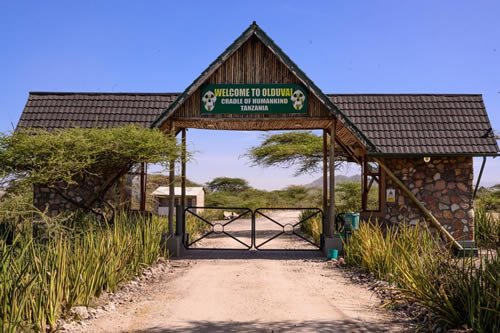
This museum is located in the Ngorongoro Conservation Area and has the remains of the first human being on earth.
The site where these remains were found is in Ngorongoro Conservation Area at the Olduvai Gorge. These remains were obtained in the year 1959 by a renown archaeologist called Leakey who discovered the 1.75-million-year-old skull. Visit the cradle of mankind the Olduvai gorge in Ngorongoro Conservation Area while on Tanzania safari and witness the remains of our forefathers.
How to get to Ngorongoro Conservation Area?
Ngorongoro Conservation Area is 177 kilometers away from the city of Arusha. This is a 3-hour drive from the city to Ngorongoro Conservation Area while using a 4×4 vehicle. The road network system to the park is developed thus easing navigation to Ngorongoro Conservation Area. Visitors can as well book a domestic direct flight to Ngorongoro Conservation Area at airstrip at the rim of the crate. This is the quickest way to the park as it can take you an hour. The airstrip is located just 3 kilometers from the headquarters of Ngorongoro Conservation Area.
Where to stay in Ngorongoro Conservation Area?
Ngorongoro Conservation Area has a variety of accommodation facilities that range from luxury, midrange to budget. Visitors book they lodges before arriving to the park. The accommodation facilities are located mostly in the conservation area but for those visitors who wish to stay outside the park there are also facilities outside. Some of the facilities include Ngorongoro Serena Safari Lodge, Pakulala Luxury Safari Camp, Ngorongoro Wild Camp, Simba Campsite and many others.
What is the best time to visit Ngorongoro Conservation Area?
Ngorongoro Conservation Area is experiences two seasons of dry and wet season throughout the year and each time has its benefits of being in the area then. However, the best time to visit Ngorongoro Conservation Area is at the end of the wet season in the month of June.
This is the ideal time from most of the activities like game drives since there are plenty of animals concentrated along water bodies. The wet season is the best time for birding especially for some specific bird species that love the water.
Enjoy your stay in Ngorongoro Conservation Area as you enjoy a ton of attractions like the big five mammals and other wildlife species, bird species, Ngorongoro crates and many others.
